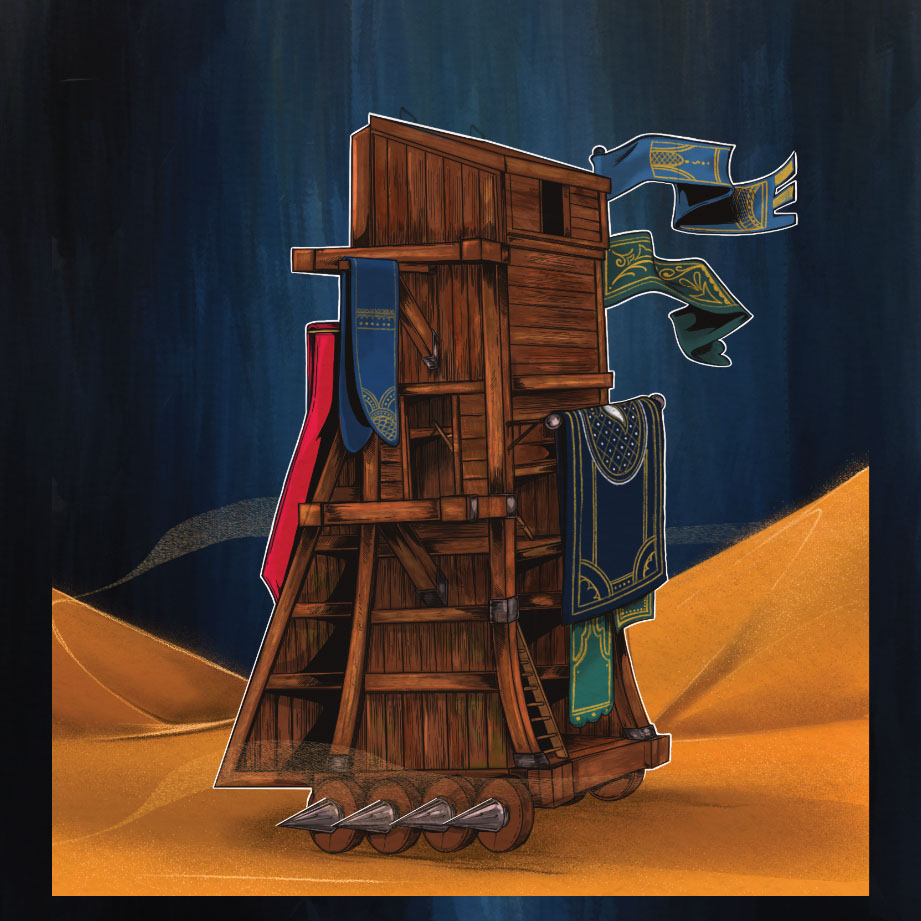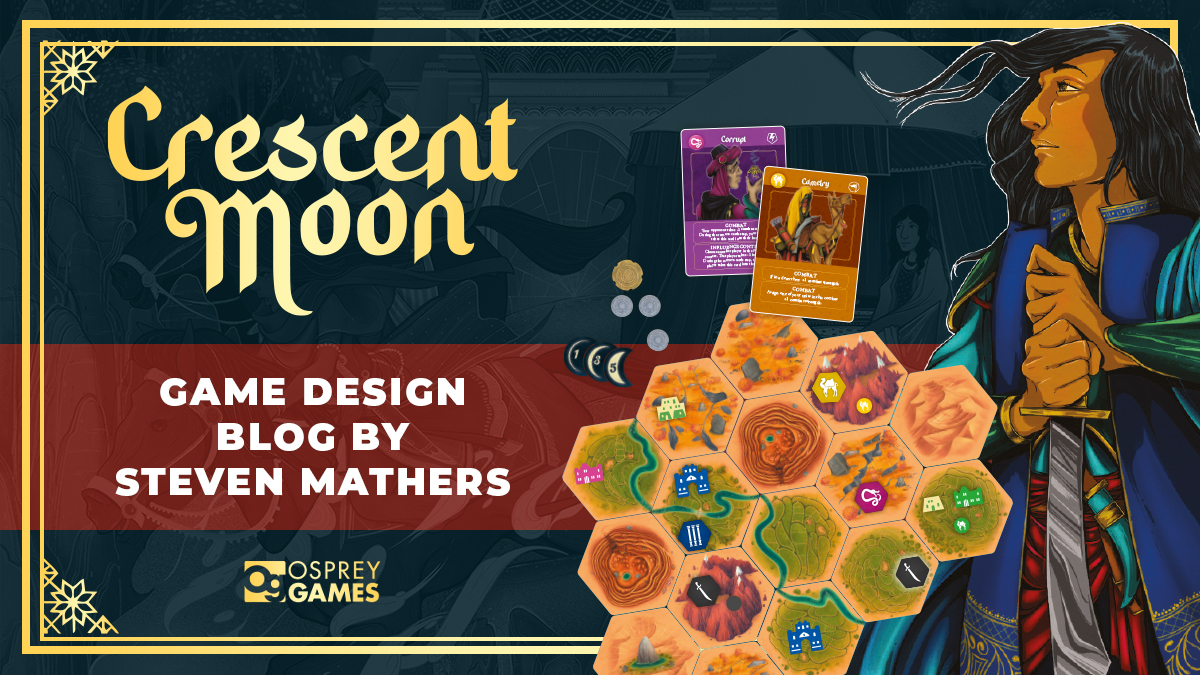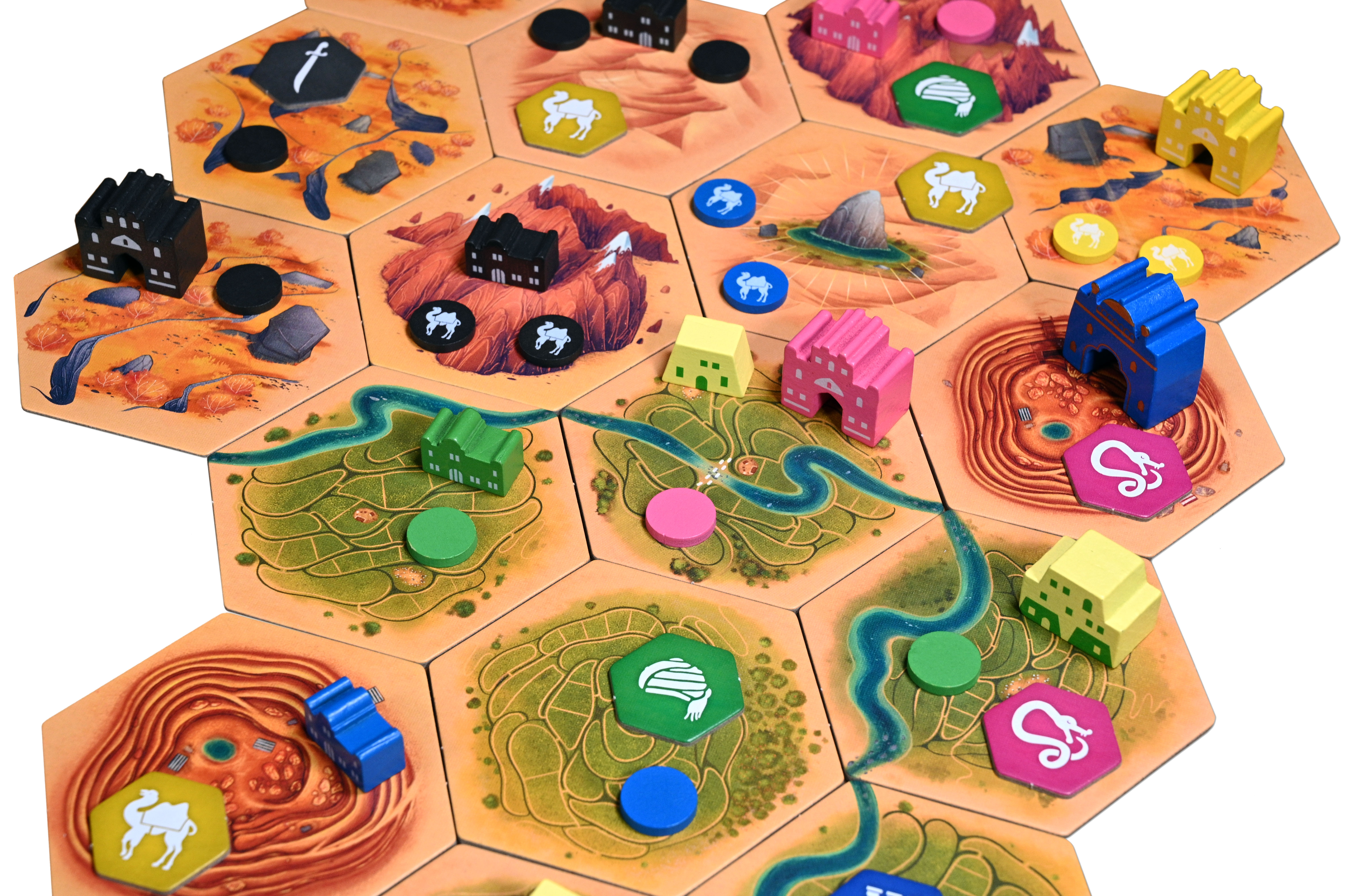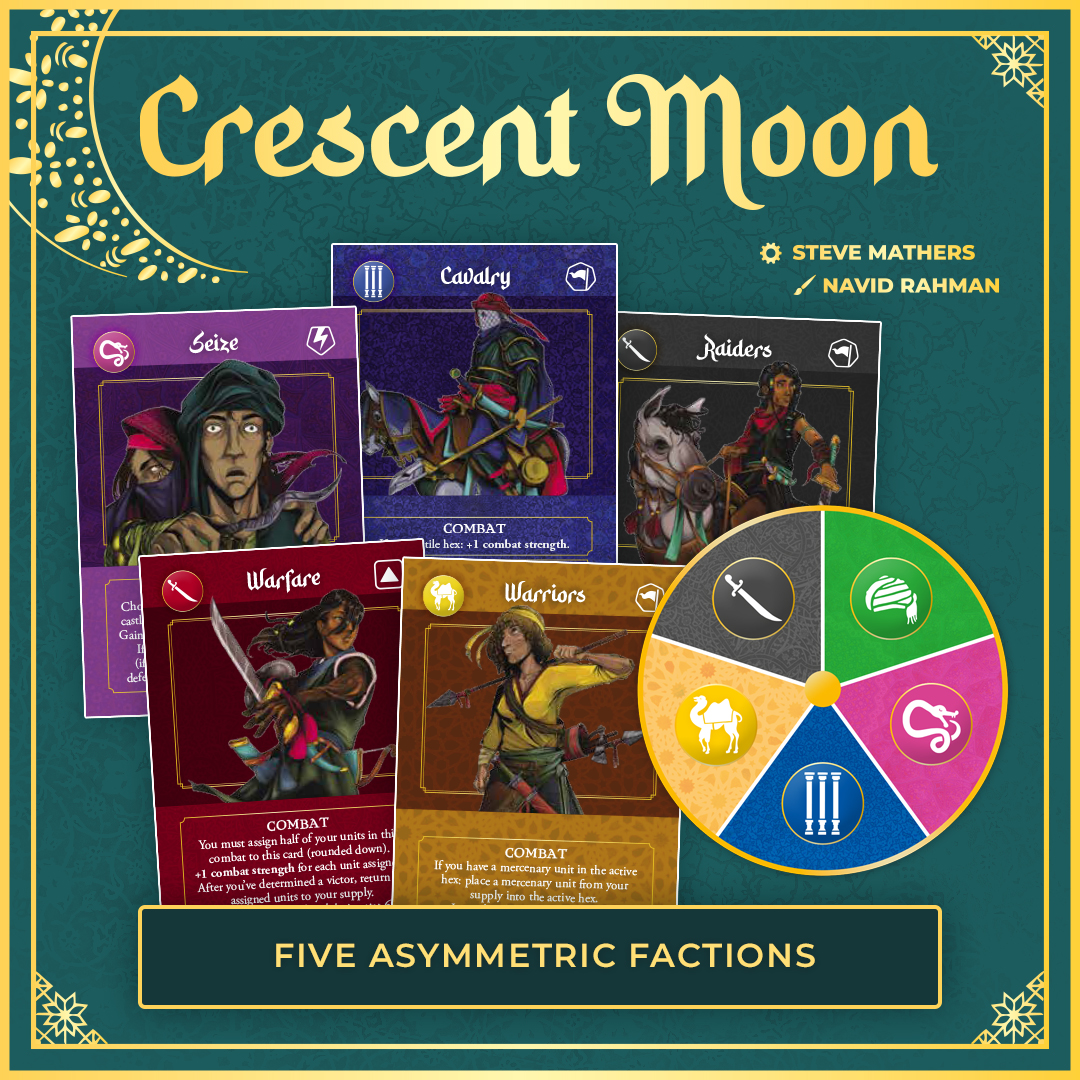
The 26 May release date of Crescent Moon - our asymmetric area control game for 4-5 players - is getting closer. We spoke again to the designer Steve Mathers to find out about the board and cards that make up the game's world ...
The Board
Crescent Moon uses a 16-hex board built up of different types of terrain - fertile, mountains, deserts and wilderness - some with special features like the river. These differences affect a myriad of things, including economic value, point scoring, ease of movement and building costs for each hex. Whilst there are standard layouts, players can use a mini-game during setup to arrange it themselves, resulting in a differently shaped board every game and a variety of strategies to consider.
When considering gameplay, I wanted players to be dynamic and fluid with their positioning. To facilitate this, unlike wargames that give defensive bonuses for occupying ‘difficult terrain’, this game’s difficult terrain has no defensive bonuses. Quite the opposite, it's harder to defend because it's more expensive to build there. This stops players from developing static lines and a ‘trench warfare’ mentality. It also fits well with the setting. It’s harder to rule isolated, resentful tribal communities in a wild landscape without roads and large population centres. You can do it, but it’s going to cost a lot more coin and/or boots on the ground.
To make sure players didn’t just avoid these hexes, the areas that are most desirable - the holy site and quarries - are hardest to defend. That some of the most desirable areas are harder to defend with buildings also places a premium on units, which is a good thing because some of the best parts of the combat system revolve around units. It also makes the hiring of Nomad mercenaries all the more appealing.
But if I want dynamic and fluid positions, why make some areas harder to move between? Well, it’s a balance. If positions are too static, it becomes a grind. If positions are too fluid, then does placement and ‘position building’ even matter? The right feel lies somewhere in between, where placement decisions are vitally important, yet positions can change significantly over the course of the entire game.
To this end, the river feature is a way to provide blocking of movement between some areas that prevents the board from being a ‘move anywhere in all directions’ kind of deal. Do you want to position your faction away from contested areas, behind barriers? Or, do you want to be more exposed, but have more access to desirable areas? Being unable to move absolutely freely in all directions adds further considerations to placement strategies, which is a good thing!
However, the river is not totally impervious. There are ship cards that can allow you to cross it. The way the card system works, however, means these are rarely sprung on opponents without foreshadowing - first the card becomes visibly available in the market, then someone buys it, and then everybody knows a river-borne attack is now possible. So, the river serves two purposes: primarily as a way of hindering movement between some areas of the board, and occasionally as an option for - not so much a surprise attack - but at least one for which the opponent may not be prepared.
The Cards
As well as the board, the players share a card market: a ‘moving conveyor belt’ of nine cards that arrive expensive at one end and become cheap at the other. This is an auction mechanic - if you want a specific card, you can pay for it immediately while it is still expensive, or you can risk waiting for it to become cheaper. Always having a large number of cards on display gives players extra possibilities to consider above their current board position. The most fun games seem to always have three or four things you can do at any given time, as players must decide which is the best action to take right now. So, when it came to the card market, I wanted to give players lots of options to have to think about.
Each of the Warlord, Nomad, Caliph, and Murshid has their own aligned cards in the deck. The Sultan doesn’t have any aligned cards, but like all factions can purchase other factions' aligned cards. However, buying another faction’s cards means the player must pay the money to that player, rather than paying half price and giving it to the supply. This is another way in which helping yourself can help another faction. For instance, other players buying Murshid-aligned cards is the main way that faction makes money.
Card Summary by Faction
Murshid: Has the most cards in the deck. Mostly espionage related. Assassination, Coups, rebellions and paying off military units, etc...
Caliph: Has the next most cards in the deck. Mostly powerful military unit upgrades, allowing the Caliphate to punch above its weight calculated in numbers of troops. Heavy cavalry, elite guardsmen, siege engines, etc...
Warlord: A mix of light unit upgrades, and leader characters that decrease casualties in combat and aid mobility.
Nomad: A couple of specialist unit upgrades such as camelry, and some leaders that enable the owner greater control of nomad units on the board.
Sultan: Does not have their own cards, but has the opportunity to sell cards from their own market of three cards for any price they like. There are a number of ways they can leverage these cards, and spending an action to restock the Sultan market gives them even more leverage because it allows them some control over what comes out next.
Crescent Moon is out May 26th and available to preorder today.





Comments
You must be logged in to comment on this post. Click here to log in.
Submit your comment